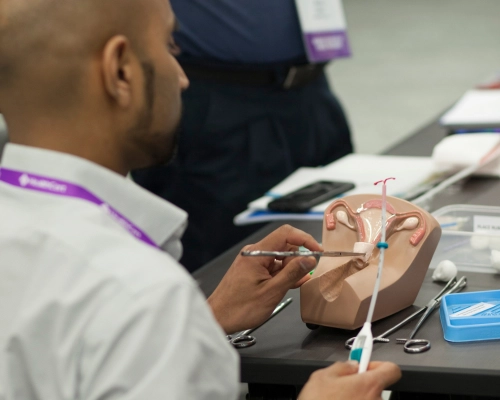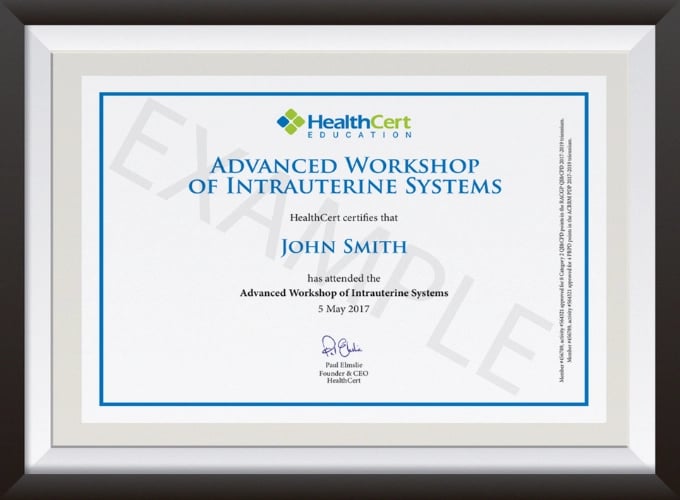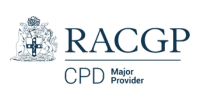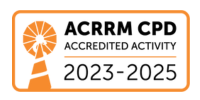This week we revisit a case from Dr David Stewart, in which a 41-year-old woman presents with a...
.jpg?height=200&name=HCE%20HubSpot%20blog%20images%20600x350%20(25).jpg)
Gain an introduction to the insertion of intrauterine devices (IUDs) as a reversible contraceptive option for female patients.

This workshop will give you the opportunity to practise IUD insertions and removals on simulated models and enable you to seriously consider this advanced procedure for long-term and reversible female contraception for your practice.
- The workshop provides a step-by-step introduction to intrauterine systems and procedures.
- This course is ideal for experienced physicians who already perform advanced clinical procedures and would like to offer IUDs for their female patients in primary care.
- This workshop is for doctors and degree-qualified nurses.
- CPD-accredited.
Workshop + online resources
From $2095
Special rates available
9.5 hrs
2026
22 March in Brisbane
17 May in Melbourne
20 September in Sydney
- Learn about the management, mode of action, effectiveness, indications, contraindications, and possible complications involved with intrauterine devices.
- Gain valuable insights into the necessary equipment required to achieve the best outcomes for your patients.
- Learn the safety guidelines you need to know to avoid complications before, during, and after IUD insertion.
- Plan patient counselling and support your female patients with contraception options.
- Provide a highly sought-after service in women's sexual health with confidence and competence.
- Attract new patients by providing IUD services.
Get unlimited access to all course content, additional learning materials, ongoing post-course support, and more.
This session commences with outlining the reasons for using long acting and reversible contraceptive options and which types of intra-uterine contraceptive device (IUCD) are available. The modes of action are details including the advantages and disadvantages of levonorgrestrel-releasing intrauterine systems (LNG-IUS). Guidance criteria that enables and supports clinicians to deliver safe, evidence-based contraceptive care to women are provided. A comparison is made between the different IUCDs. The use of IUDs for non-contraceptive purposes including hormone therapy or menorrhagia is included. The session outlines the correct steps in the process of intrauterine procedures, emphasising training requirements, examination and investigation, timing and rare and unusual complications during insertion. Reducing insertion related pain and prevention of insertion crisis are the two topics that conclude this session.
This session focusses on possible complications and management of IUDs, starting with intrauterine or extrauterine pregnancy. The session then continues with factors that influence malposition and expulsion, perforation or pelvic infection/pelvic inflammatory disease, bleeding or persistent pain and the management of these incidences. Furthermore, the removal of IUS (in women aged 50+ or of devices inserted in other countries) is described. A brief overview of copper IUDs is given, listing main mode of action, effectiveness and indications and contraindications. A comparison is made between levonorgrestrel-releasing intrauterine systems and coper IUDs as well as the advantages and disadvantages specific to copper IUDs. The session concludes with the use of copper IUDs as an emergency contraception and hormonal IUD effective options.
The session recognises the safety rules to avoid complications in intrauterine procedures, starting with a pre-insertion counselling checklist, including aspects like (contra-)indications/suitability, microbiological screening, timing of insertion and pre-medication. The session details the necessary equipment for intrauterine procedures, including a so-called emergency tray consisting of several drugs like Diazepam, Atropine and mefenamic acid. A description is given of the insertion process in which special attention is being paid to the necessity of patient informed consent. A post-insertion checklist is given including aspects like documentation, re-iteration of possible complications and discussion of follow-up.
The session concludes with an overview of the IUS removal procedure.
This session examines different case studies. The first case study of this last session commences with the case of a 23-year-old nulliparous woman who wants to use an IUS because of dissatisfaction with the COC she is currently using. The second case study is of a 30-year-old mother of one who is currently breastfeeding. She had an occurrence of pelvic inflammatory disease. The final case study is of a 37-year old woman who has an IUCD sitting within the pelvic cavity. In all studies the questions and concerns of the patients are discussed in small groups and then the larger group. The session concludes with business considerations, including cost of providing IUD service, cost of equipment/consumables and cost comparisons.

Professor General Practitioner at Narangba Doctors, Queensland
Diploma of the Royal College of Obstetrics and Gynaecology, UK (DRCOG) 2000
Diploma of Family planning and Sexual Health Medicine, UK (DFFP) 2003
Obtained Letter of Competence in Intrauterine Techniques by FFPRHC, 2003
Dr Nelum Dharmapriya was born in Sri Lanka. She graduated from the University of Aberdeen, UK, in 1995 and was a partner at Heaton Norris Medical Centre in Stockport, UK, for seven years. Nelum arrived in Australia in 2009 and established Narangba Doctors in 2012. She is married with two teenage boys and loves to spend time outdoors – running, cycling, travelling and reading.
Complete course theory online, then put your knowledge into practice at a weekend small-group workshop.

Bundle two courses and save 5%, or three courses and save 10% upon enrolment.
Talk to us about deferred payment options, registrar scholarships and special rates.
*GST inclusive.

Nelum used very clear language and interacted well with the audience.
Dr E. Youssef
After this course, I feel confident in inserting IUD by myself.
Dr S. Chao
The workshop offered very proper training in wonderful, well put-together presentations.
Dr P. Louis
Precise and helpful presentation and videos.
Dr M. Macaspac
The Advanced Workshop was a valuable learning experience. It was a relevant, informative and enjoyable course.
Dr C. Boeke
The Advanced Workshop of Intrauterine Systems was a very well organised hands-on experience. An excellent course equally valuable for doctors with no experience or with previous experience.
Dr F. Zia
| RACGP Activity Number | ACRRM Activity Number | Activity Title | Education Hours | Performance Hours | Outcome Hours | ||
|---|---|---|---|---|---|---|---|
| 489255 | Advanced Workshop of Intrauterine systems | 489255 | 4 | 5.5 | 0 | ||
| Total hours | 4 | 5.5 | 0 | ||||
The Advanced Workshop of Intrauterine Systems is suitable for doctors and degree-qualified nurses who are interested in performing IUD insertions and removals in the primary care setting, who also wish to gain an introduction to this advanced procedure. Participants can expect a step-by-step guide to the technique and valuable insights into the necessary approach to achieve the best outcomes for their patients.
The program assumes previous experience in clinical procedures.
Participants do not have to pass an IELTS test but, as the courses are delivered in English, proficiency in listening, reading and writing English is assumed.
Participants will require access to a computer/laptop, an internet connection and a basic level of technology proficiency to access and navigate the online learning portal.
Professionally recognised qualifications and prior studies may be recognised for entry into this course if the learning outcomes match exactly. Please ask a HealthCert Education Advisor for an individual assessment of your prior qualifications and experience.
Upon completion of the workshop, participants should:
before considering this procedure for your patients.
Upon successful completion of the course requirements, course participants will receive the Advanced Workshop of Intrauterine Systems certificate, and CPD hours.
This advanced workshop:
To learn more about the delivery of certificates in Australia and overseas, please visit our FAQs.
Further studies
You may be interested in furthering your skills in fertility control with the Advanced Workshop of Non-Scalpel Vasectomy. HealthCert also offers online Professional Diploma program in Women's Health.
This organisation is an RACGP-accredited CPD provider under the RACGP CPD Program.



Don't see your question? Explore other faqs or talk to us.
Fees will vary based on the program and study option selected (fully online vs online + optional practical workshop). Payments can be made upfront or in monthly instalments. Special rates and various payment options are available. GP registrars and doctors in training enjoy a scholarship of up to $500. Talk to us to learn more.
Completion of any HealthCert course or attendance at an event will enable you to access the HealthCert Alumni Program which includes:
HealthCert Education is pleased to issue digital credentials for alumni. Digital credentials are a permanent online record of your successful completion of a HealthCert course and are issued to all course participants in addition to PDF certificates. If you are based in Australia, you also have the option to order a hard copy of your digital certificate for a small additional fee.
The recommended study duration of this certificate course is 9.5 hours, which includes study of the pre-course activities and readings, the one-day workshop, and the online assessment.
All HealthCert courses meet World Federation of Medical Education standards. This certificate course qualifies for CPD hours from the Royal Australian College of General Practitioners (RACGP) and the Australian College of Rural and Remote Medicine (ACRRM) in Australia. It is recognised by the Royal New Zealand College of General Practitioners (RNZCGP) in New Zealand. It is recognised by the Hong Kong College of Family Physicians (HKCFP) in China. It is a self-submitted activity in Dubai and the United Kingdom. It is a self-submitted activity through the College of Family Physicians in Canada. If you live or work outside one of the above-mentioned countries, please contact us on admin@healthcert.com to discuss whether this course can be recognised in your country.
Want to stay up-to-date with the latest case studies, podcasts, free video tutorials and medical research articles pertinent to primary care?
Our Education Advisors can assist you with any queries and tailor our education pathway to suit your current expertise, interests and career goals.